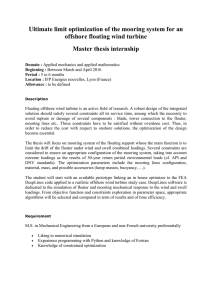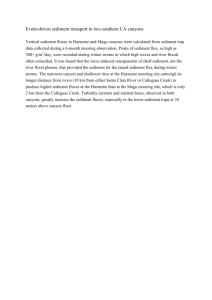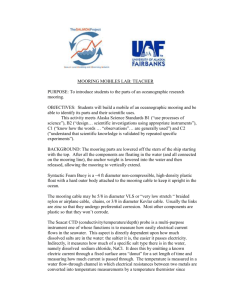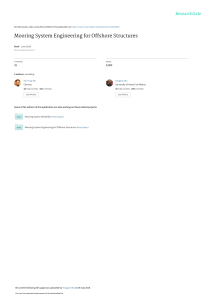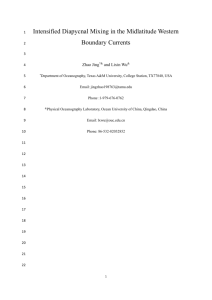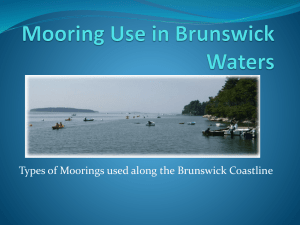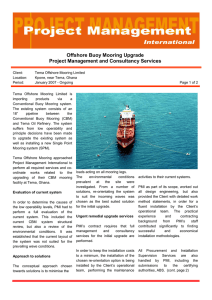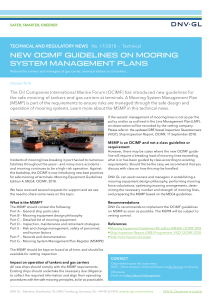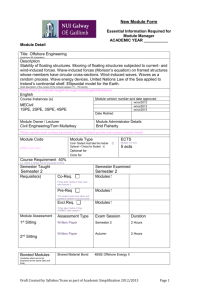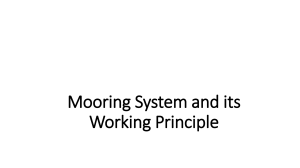Tasmania_Mar05
advertisement
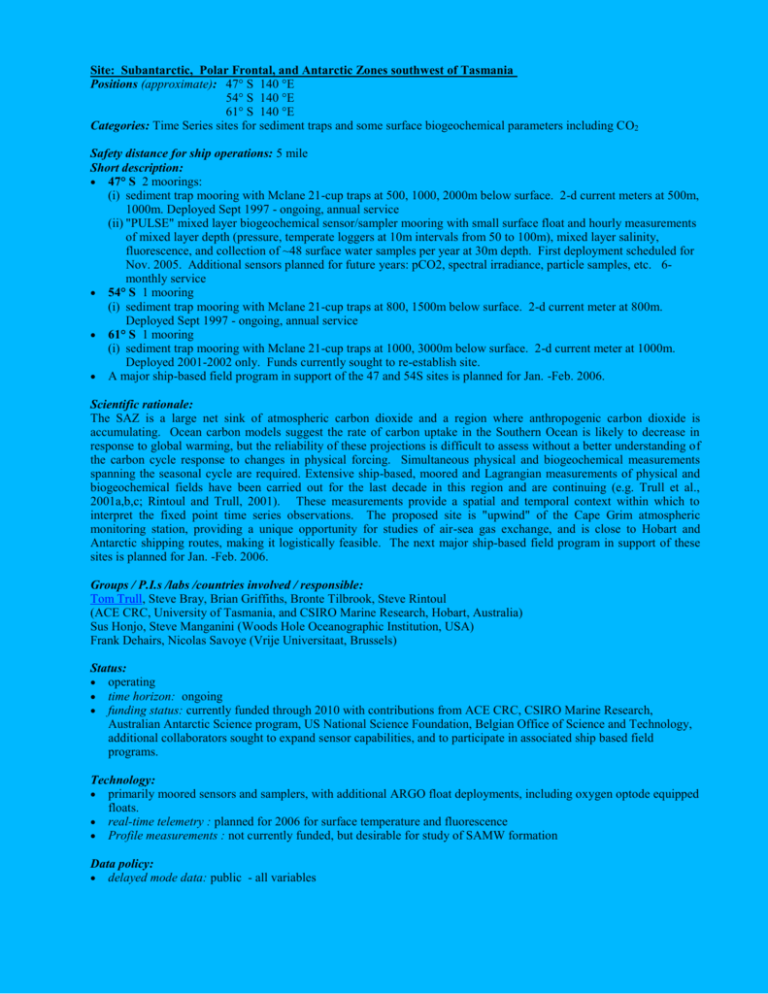
Site: Subantarctic, Polar Frontal, and Antarctic Zones southwest of Tasmania Positions (approximate): 47° S 140 °E 54° S 140 °E 61° S 140 °E Categories: Time Series sites for sediment traps and some surface biogeochemical parameters including CO2 Safety distance for ship operations: 5 mile Short description: 47° S 2 moorings: (i) sediment trap mooring with Mclane 21-cup traps at 500, 1000, 2000m below surface. 2-d current meters at 500m, 1000m. Deployed Sept 1997 - ongoing, annual service (ii) "PULSE" mixed layer biogeochemical sensor/sampler mooring with small surface float and hourly measurements of mixed layer depth (pressure, temperate loggers at 10m intervals from 50 to 100m), mixed layer salinity, fluorescence, and collection of ~48 surface water samples per year at 30m depth. First deployment scheduled for Nov. 2005. Additional sensors planned for future years: pCO2, spectral irradiance, particle samples, etc. 6monthly service 54° S 1 mooring (i) sediment trap mooring with Mclane 21-cup traps at 800, 1500m below surface. 2-d current meter at 800m. Deployed Sept 1997 - ongoing, annual service 61° S 1 mooring (i) sediment trap mooring with Mclane 21-cup traps at 1000, 3000m below surface. 2-d current meter at 1000m. Deployed 2001-2002 only. Funds currently sought to re-establish site. A major ship-based field program in support of the 47 and 54S sites is planned for Jan. -Feb. 2006. Scientific rationale: The SAZ is a large net sink of atmospheric carbon dioxide and a region where anthropogenic carbon dioxide is accumulating. Ocean carbon models suggest the rate of carbon uptake in the Southern Ocean is likely to decrease in response to global warming, but the reliability of these projections is difficult to assess without a better understanding of the carbon cycle response to changes in physical forcing. Simultaneous physical and biogeochemical measurements spanning the seasonal cycle are required. Extensive ship-based, moored and Lagrangian measurements of physical and biogeochemical fields have been carried out for the last decade in this region and are continuing (e.g. Trull et al., 2001a,b,c; Rintoul and Trull, 2001). These measurements provide a spatial and temporal context within which to interpret the fixed point time series observations. The proposed site is "upwind" of the Cape Grim atmospheric monitoring station, providing a unique opportunity for studies of air-sea gas exchange, and is close to Hobart and Antarctic shipping routes, making it logistically feasible. The next major ship-based field program in support of these sites is planned for Jan. -Feb. 2006. Groups / P.I.s /labs /countries involved / responsible: Tom Trull, Steve Bray, Brian Griffiths, Bronte Tilbrook, Steve Rintoul (ACE CRC, University of Tasmania, and CSIRO Marine Research, Hobart, Australia) Sus Honjo, Steve Manganini (Woods Hole Oceanographic Institution, USA) Frank Dehairs, Nicolas Savoye (Vrije Universitaat, Brussels) Status: operating time horizon: ongoing funding status: currently funded through 2010 with contributions from ACE CRC, CSIRO Marine Research, Australian Antarctic Science program, US National Science Foundation, Belgian Office of Science and Technology, additional collaborators sought to expand sensor capabilities, and to participate in associated ship based field programs. Technology: primarily moored sensors and samplers, with additional ARGO float deployments, including oxygen optode equipped floats. real-time telemetry : planned for 2006 for surface temperature and fluorescence Profile measurements : not currently funded, but desirable for study of SAMW formation Data policy: delayed mode data: public - all variables Data management: Satellite data collection system : future Iridium based transmission Metadata scheme : no decisions yet made Possibilities of evolution to comply with a more general JCOMM GTS scheme : possible, subject to funding Societal value / Users / customers: Improved projections of future carbon budgets and ocean ecosystem health Role in the integrated global observing system: The moorings offer a rolling series of process experiments of limited duration, coupled together to provide a long-term assessment of ocean carbon cycle processes. Contact Person: Tom.Trull@utas.edu.au Links / Web-sites: www.acecrc.org.au Compiled by : Tom Trull (March 2005) Figure 1. SAZ Project sediment trap mooring locations along 140E shown against a late-summer (March 1998) temperature section. An additional sediment trap mooring (not shown) was deployed at 61S in 2001-2002. Funds are currently being sought to re-establish this site. The PULSE mooring planned for deployment at 47S in late 2005 is not shown.

